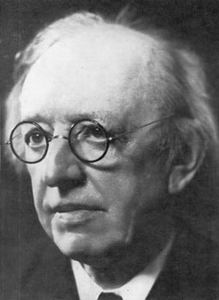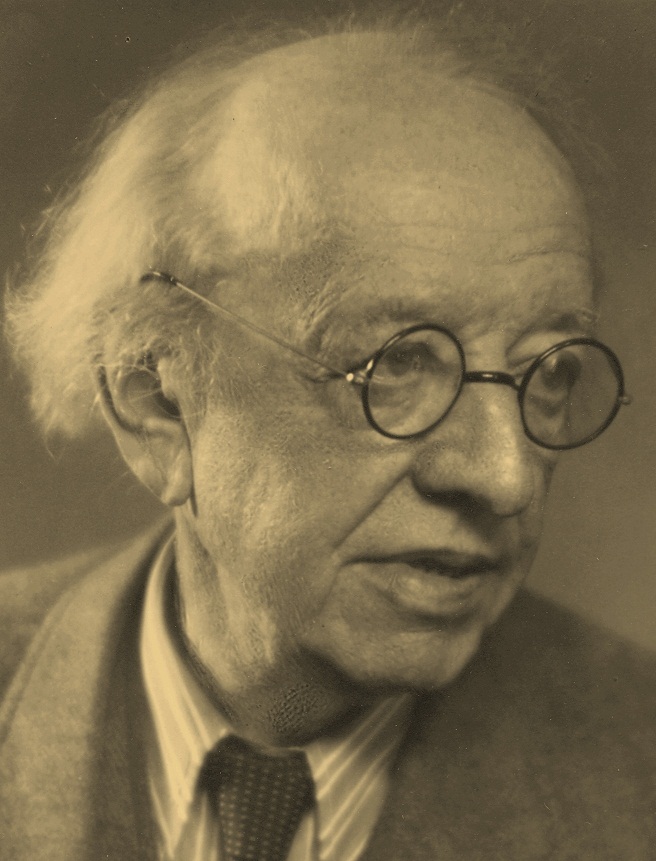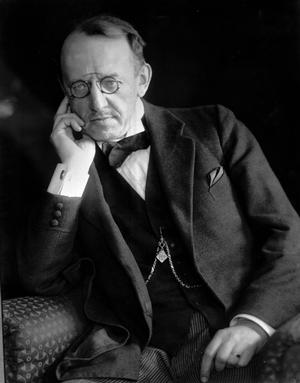<Back to Index>
- Aircraft Designer Clyde Vernon Cessna, 1879
- Composer Vítězslav Novák, 1870
- Vice Premier of the People's Republic of China General Lin Biao (Lin Yurong), 1907
PAGE SPONSOR



Vítězslav Novák (December 5, 1870 – July 18, 1949) was one of the most well respected Czech composers and pedagogues, almost singlehandedly founding a mid-century Czech school of composition. Stylistically, he was a leading figure in the Neo - Romanticism movement, and his music has been occasionally considered an early example of Czech modernism.
Novák (baptized Viktor Novák) was born in Kamenice nad Lipou, a small town in Southern Bohemia. After the death of his father the family moved to Jindřichův Hradec, a larger town where an elementary school still bears his name. In his late teens he moved to Prague to study at Prague Conservatory, changing his name to Vítězslav to identify more closely with his Czech identity, as many of his generation had already done. At the conservatory he studied piano and attended Antonín Dvořák's masterclasses in composition where his fellow students included Josef Suk, Oskar Nedbal, and Rudolf Karel. When Dvořák departed for his three year sojourn in America (1892 – 1895), Novák continued his studies with the ultra - conservative Karel Stecker. Novák would show his true colors, however, in the years shortly after graduation: just before and after 1900, he wrote a series of compositions that put distance between himself and the teachings of both Stecker and Dvořák, edging his style toward the fledgling modernist movement.
Beginning in the late 1890s, Novák began to explore influences beyond the prevailing Wagner / Brahms aesthetic of his contemporaries in Prague. Among these were folk influences from Moravia and Slovakia, which at that time were considered culturally backward in the cosmopolitan Czech capital. He also developed an interest in what would come to be called musical Impressionism, although later in life he denied any exposure to the music of Debussy at this time, claiming instead to have arrived at similar techniques on his own. These included forays into bitonality and non-functional, parallel harmony. Finally, after the Prague premiere of Salome in 1906, Novák formed an attachment to the music of Richard Strauss that would remain for the rest of his career. In many respects, Novák's career would follow a similar path as that of Strauss, in his early quest for new modernist expression and subsequent withdrawal from leadership in the movement.
Shortly after the turn of the century, Novák began teaching composition privately in Prague. From 1909 to 1920, he taught at the Prague Conservatory himself, and this occasionally occupied him to a greater degree than composing. During the same period, several events of a more personal nature affected Novák's outlook on musical expression and artistic freedom. In the years 1901 - 1917, his apartment became the site of a discussion group known as the Podskalská filharmonie; while most of its members were musicians, including Suk, Karel, and the conductor Václav Talich, performances were confined to readings of new modernist works from abroad and the group's goals were primarily intellectual. The Filharmonie served, however, as an important proving ground for this budding circle of Czech modernists and their ideas; by regulation, its only female member was Marie Prášková, who became Novák's wife in 1912. This same year, Novák became embroiled in a series of culturo - political battles in Prague between his Conservatory based faction and that of Zdeněk Nejedlý, a critic and musicologist at Prague University. When Novák signed a protest against Nejedlý's anti - Dvořák propaganda, the critic turned his energies toward Novák's own music, effectively with the intent of ruining the composer's career: the effects of Nejedlý's hatred were long lasting and ushered in a crisis in Novák's creative life.
Upon Czech independence in 1918, Novák turned toward a less personal manner of involvement in Prague musical life: the administration of culture in the new democratic regime. In this capacity, he led the push toward de-Germanification and nationalization of the Conservatory, during which process his German - Bohemian colleagues, including Alexander Zemlinsky and Paul Nettl, were forced out to form their own segregated institution. Novák became the new administrative head of the Czech - only institution and held various titles, alternating with Suk and others, until his retirement. During this period he continued to teach composition in the form of masterclasses, thereby influencing a new interwar generation of musicians, despite the increasing conservatism of his compositions in the 1920s.
In
the 1930s, Novák enjoyed a period of artistic renewal with the
premieres of some large scale compositions. After the collapse of
democracy and the ensuing Nazi protectorate in
1939, the retired professor gained considerable credibility among his
younger Czech contemporaries through the performance of several
patriotic and morale boosting works, meant as a musical form of
resistance. After the Second World War, he devoted himself to a lengthy memoir, entitled O sobě a jiných (Of Myself and Others, publ. 1970), in which he aired many of his long standing grudges, especially toward his main rival, Otakar Ostrčil and even his close friend Josef Suk. He died in Skuteč in Eastern Bohemia, where he had spent much of his last years. Novák's music retained at least a partial allegiance to the late Romantic style until his death. His earliest work to receive an opus number was a piano trio in G minor, but was preceded, in order of composition, by several works including an unpublished serenade in B minor for piano dating from 1886-7; all of these bear the influences of Schumann and Grieg. In his earliest years after graduating from Prague Conservatory his work began to show some influence from the Moravian and Slovak folk music which
he began to collect and study in the late 1890s. Within the decade he
had assimilated the basic intervallic and rhythmic characteristics of
these folksongs into a very personal compositional style. The first
works to reveal this change are the second string quartet op. 22 and the path breaking solo piano work, Sonata eroica, op. 24. The next influence was that of French impressionism, which first appears in the song cycle Melancholie, op. 25, composed in 1901, and reaches a peak in the tone poem O věčné touze (Of
the Eternal Longing, op. 33, completed 1905). Meanwhile the more
monumental aspects of his style, evident in the Slovak inspired tone
poem V Tatrách (In the Tatras, op. 26, 1902) and the song cycle Údolí nového království (Valley
of the New Kingdom, op. 31, 1903) met their match in his discovery of
the music of Strauss: the result was the tone poem, Toman a lesní panna (Toman and the Wood Nymph, op. 40, completed 1907). The
height of his compositional career was acknowledged, even in the
criticism of the day, to consist of two great achievements, both completed in 1910: Pan, the five movement tone poem for piano solo (totaling some sixty pages of music, op. 43), and Bouře (The Tempest, op. 42, to a text by Svatopluk Čech, unrelated to Shakespeare's play). The latter was an immense symphonic cantata for
soloists, chorus, and orchestra, spanning almost an hour of unbroken
music; its attention to musico - dramatic detail points to Novák's
increasing interest in opera, a genre he had yet to attempt. The
polemics with Nejedlý brought about a sharp turn in
Novák's attitude to composition, wherein fear of rejection
outpaced the joy of artistic exploration. The public dismissal of the
orchestrated version of Pan (1912) and the next cantata, Svatební košile (The Wedding Shirt, 1913, based on the same Erben text
as Dvořák's more famous work) brought about severe self-doubt
and depression. Novák attempted to turn the situation around
with two operas written on Czech historical subjects — a transparently
nationalist move during wartime. Zvíkovský rarášek (The Zvíkov Imp, 1915, a comedy based on Stroupežnický) and Karlštejn (Karlštejn castle, 1916, a more serious work based on Vrchlický)
both met with mixed reviews, although the latter gained an important
place in the repertoire of Czech opera houses through mid century.
These works reveal Novák's tendency, latent in the early
folksong work, toward bitonality, although this technique is not as manifest as in the works of Stravinsky, Milhaud, or Szymanowski. The birth of the new republic in 1918 brought a rash of patriotic compositions, dedicated to the "President - Liberator" Tomáš Garrigue Masaryk and the Czechoslovak Legion.
These democratic impulses led to a marked conservatism in style, such
that the artistic leadership of the years 1900 - 1916 all but
disappeared. The two remaining operas, Lucerna (The Lantern, 1923, based on Jirásek), and Dědův odkaz (The grandfather's legacy, 1926, based on Heyduk)
met with predominantly negative criticism, despite the compositional
worth of the former; importantly, they induced extreme bitterness
toward the cultural forces that opposed him, driving him toward reactionism. With two ballet - pantomimes completed in the years 1928 - 29, Signorina Gioventù and Nikotina,
Novák regained some of the respect he had lost among his
colleagues; their vibrant layering of orchestral effects (including
mixed meters and even references to tango) won him new admirers among the younger generation, most notably Iša Krejčí and Alois Hába. The years of the 1930s saw a return to chamber music, but also large forms such as the epic choral / orchestral work, Podzimní symfonie (Autumn Symphony, op. 62, premiered 1934). During
the years of the Nazi occupation, Novák's star rose again in the
estimation of his compatriots, especially for the depth of his
patriotic works, instilled with an intense, noble melancholy for the
Czech people: the symphonic poems with organ, De Profundis (op. 67, 1941) and Svatováclavský triptych (Saint Wenceslas triptych, op. 70, 1942) and the Májová symfonie (May Symphony, op. 73, dedicated to Stalin as
liberator of the Czechs and premiered after the war in 1945)
demonstrate these sentiments in a monumental fashion. In his remaining
years he devoted himself to choral works based on South - Bohemian
folksong.